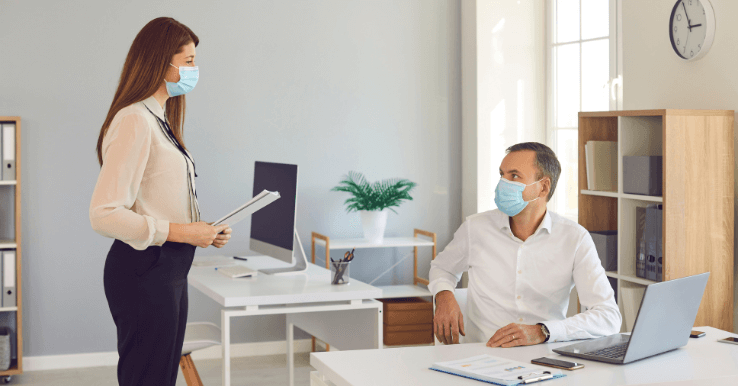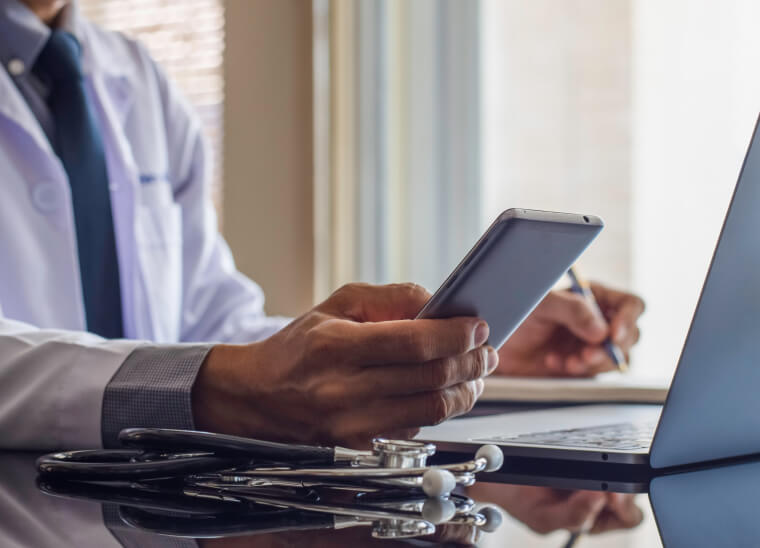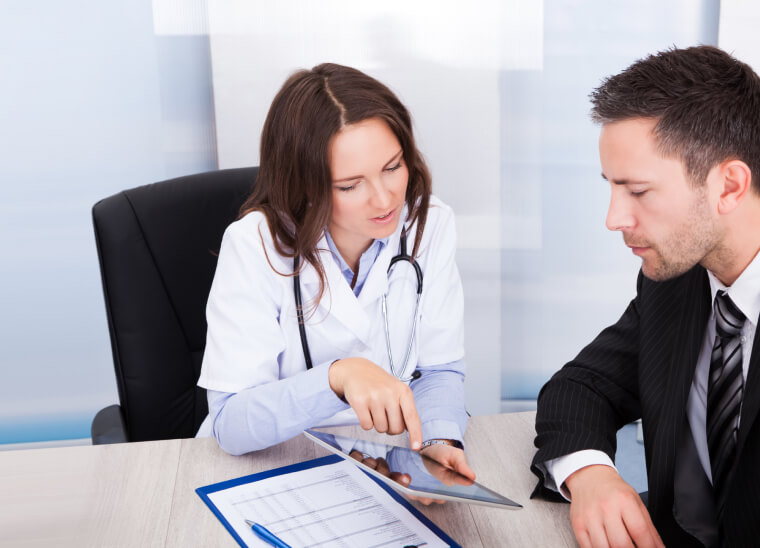As more and more employees get vaccinated against COVID-19, many will wonder what they can and cannot do safely once they’re fully immunized — two weeks after receiving the second dose of the Pfizer and Moderna vaccines, or two weeks after receiving the single dose of the Johnson & Johnson vaccine. Before they go taking off their masks, throwing parties, and gathering with groups of colleagues again, there are important safety precautions to follow. While the vaccines are a step in the right direction towards ending the pandemic, they shouldn’t be seen as a “cure-all,” and the CDC released guidelines to address exactly how our behaviors can change once we get vaccinated (hint: they’re not drastic adjustments). To help, we outline the do’s and don’ts below.
The Do’s:
Continue to follow safety guidelines in public spaces.
In public, fully vaccinated individuals should still wear a mask, stay at least six feet away from others, avoid crowds, wash hands frequently, and cover their coughs and sneezes. This also means following workplace policies that protect the greater employee population.
There is no way to determine if the people you encounter throughout the day are unvaccinated or have an increased risk of COVID-19, so it’s critical to take precautions that keep them safe.
Visit with other fully vaccinated people indoors without wearing masks or socially distancing.
In private settings, fully vaccinated individuals can visit other vaccinated people indoors. Why? There’s a reasonably low risk that these people will transmit the virus to each other and then become sick with COVID-19.
Visit with unvaccinated people indoors, if they are from a single household who is at low risk for severe COVID-19 disease.
If the unvaccinated people live together and do not have an increased risk of severe COVID-19, fully vaccinated people can visit them privately indoors, without anyone wearing masks or physically distancing. The unvaccinated individuals should confirm their comfort level though, since they are the ones not protected against COVID-19.
If the unvaccinated people come from different households, there is a higher risk of COVID-19 transmission. In this case, all people should wear a mask, keep at least 6 feet apart, and stay outdoors or in a well-ventilated space.
The Don’ts:
Don’t travel unnecessarily.
The CDC has not updated their travel guidelines for vaccinated individuals, and all people — regardless of vaccination status — should avoid traveling to protect themselves and others. For this reason, business travel should continue to be limited when possible.
Don’t attend medium or large-sized gatherings.
Whether vaccinated or not, everyone should continue to follow the CDC guidelines around events in addition to any state or local guidelines. For employers, this means that you should continue to abide by the recommendations for smaller gatherings and avoid organizing bigger conferences. When possible, enable your employees to meet virtually instead of in-person.
Don’t ignore COVID-19 symptoms, especially after an exposure to someone with suspected or confirmed COVID-19.
It’s still possible for vaccinated employees to become infected with COVID-19. If symptoms emerge, they should isolate and be clinically evaluated. On the other hand, fully vaccinated individuals with no symptoms do not need to quarantine or be tested after an exposure to COVID-19, because their risk of infection is low.
Overall, the increase in vaccinations is encouraging, but we still need more understanding when it comes to how effective the vaccines are at preventing transmission and how herd immunity thresholds will impact the workplace and our communities. Therefore, these CDC recommendations shouldn’t change any workplace policies yet or imply that employers can be more lenient with their protocols; employees should still wear masks and socially distance when they are around each other — or work remotely if their job allows. For more guidance on returning to work, download our free guide on managing COVID-19 in the workplace.
Disclaimer: This information is based on current resources available and is subject to change. This document and its contents are provided for informational purposes only, and not intended to be, and should not be understood or treated as, a substitute for professional medical advice around COVID-19, its risks or symptoms, or to take the place of any local, state and national laws and guidelines around COVID-19. Always seek the advice of a physician or other qualified health provider with any questions you may have regarding a medical condition.





